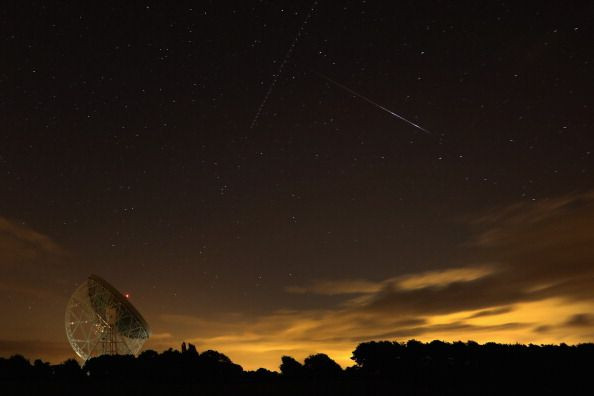Northern Taurid Meteor Shower: When, Where And How To Watch Fireball Peak
KEY POINTS
- The Northern Taurid meteor shower will peak Wednesday night
- The best time to watch the shower is after midnight in one's local time zone
- Stargazers can expect to see about five fireballs per hour during peak activity
Stargazers can catch fireballs lighting up the night sky this week as the Northern Taurid meteor shower reaches its peak viewing conditions.
The Northern Taurids have been active in the sky since Oct. 20 and will remain active until Dec. 10, but the annual shower will be at its peak this week. The Northern Taurid meteor shower is expected to reach maximum activity Wednesday night until Thursday morning, according to the American Meteor Society (AMS).
Around this time each year, the Earth passes through a cloud of debris left behind by Comet 2P/Encke, and this results in the Taurids. The smaller debris may appear as "shooting stars" in the night sky, while the larger chunks could become fireballs.
Although the Taurid meteor showers aren't as well known as the Perseids or the Leonids, they still offer a great experience for space enthusiasts. Bill Cooke Jr., the head of NASA's Meteoroid Environment Office, said stargazers can expect about five fireballs per hour during peak activity which will be traveling at around 18 miles per second.
It is possible to see the Taurids fly by earlier in the evening for those in the Northern Hemisphere, but it is a little less likely. The best time to view the meteor shower will be after midnight in one's local time zone, Cooke told CNN.
He also assured that the Taurid meteor shower will be safe to watch for everyone, recommending that stargazers view it in a place without artificial lights.
"I was 13 so I was an obnoxious little teenager, and I saw a very bright Taurid fireball, and I thought that was a really cool thing to happen on Halloween," he said.
The Taurids are known to be especially active every seven years, and 2022 is the year when the Earth will be able to see the most of this meteor shower. However, Wednesday night's shower will still display a handful of shooting stars and perhaps even a fireball every hour if one is viewing the cosmic show in an area far away from light pollution that could overpower the Taurids' shine.
Fireballs are meteors that shine brighter than Venus, which is the second brightest object in the evening sky after the moon. Taurid fireballs look like a streak of light that only lasts for about a second or two.
Another cosmic show that recently lit up the Earth's sky is the Southern Taurid meteor shower, which also originates from Comet 2P/Encke. It started earlier than the Northern Taurids and peaked on Oct. 29 and 30, according to AMS.
According to EarthSky, there is also the Geminids meteor shower to look forward to as this will peak on the night of Dec. 13 until the following morning.

© Copyright IBTimes 2024. All rights reserved.





















